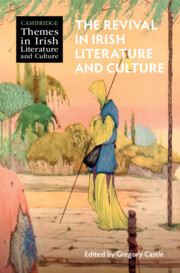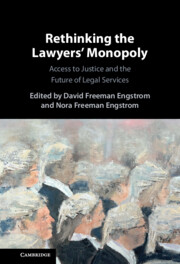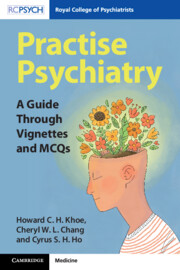Refine search
Actions for selected content:
3380348 results
The current state of paediatric publishing utilising high-fidelity physiologic data streaming with sickbay or etiometry: a systematic review
-
- Journal:
- Cardiology in the Young , First View
- Published online by Cambridge University Press:
- 05 September 2025, pp. 1-6
-
- Article
- Export citation
Working towards affordable healthy diets: a review on innovations in food price monitoring, policy and research in Australia and beyond
-
- Journal:
- Proceedings of the Nutrition Society , First View
- Published online by Cambridge University Press:
- 05 September 2025, pp. 1-12
-
- Article
-
- You have access
- Open access
- HTML
- Export citation
Enhancing Empathic Accuracy: Penalized Functional Alignment Method to Correct Temporal Misalignment in Real-Time Emotional Perception
-
- Journal:
- Psychometrika ,
- Published online by Cambridge University Press:
- 05 September 2025, pp. 1-22
-
- Article
-
- You have access
- Open access
- HTML
- Export citation
Management of Embedded Unexploded Ordnance in Low-resource Settings: A Scoping Review – ADDENDUM
-
- Journal:
- Disaster Medicine and Public Health Preparedness / Volume 19 / 2025
- Published online by Cambridge University Press:
- 05 September 2025, e258
-
- Article
-
- You have access
- Open access
- HTML
- Export citation
Brain dynamics of crosslinguistic interference resolution in Spanish–English bilinguals with and without aphasia
-
- Journal:
- Bilingualism: Language and Cognition , First View
- Published online by Cambridge University Press:
- 05 September 2025, pp. 1-19
-
- Article
-
- You have access
- Open access
- HTML
- Export citation
What happens to qualitative studies initially presented as conference abstracts: A survey among study authors
-
- Journal:
- Research Synthesis Methods ,
- Published online by Cambridge University Press:
- 05 September 2025, pp. 1-10
-
- Article
-
- You have access
- Open access
- HTML
- Export citation
Morphological and molecular characterisation of Xiphinema pedrami sp. nov. and X. basiri Siddiqi 1959 (Nematoda: Longidoridae) from southern Iran
-
- Journal:
- Journal of Helminthology / Volume 99 / 2025
- Published online by Cambridge University Press:
- 05 September 2025, e103
-
- Article
- Export citation
Irrational Beliefs May Drive the Disposition Effect: Evidence from Financial Professionals
-
- Journal:
- Journal of Financial and Quantitative Analysis / Accepted manuscript
- Published online by Cambridge University Press:
- 05 September 2025, pp. 1-66
-
- Article
- Export citation
Prospects and challenges of salivary gland tissue engineering in Sjögren’s syndrome
-
- Journal:
- Expert Reviews in Molecular Medicine / Accepted manuscript
- Published online by Cambridge University Press:
- 05 September 2025, pp. 1-44
-
- Article
-
- You have access
- Open access
- Export citation
Colours, humours and material change in late Renaissance chymistry and medicine
-
- Journal:
- BJHS Themes , First View
- Published online by Cambridge University Press:
- 05 September 2025, pp. 1-20
-
- Article
-
- You have access
- Open access
- HTML
- Export citation

Pouring Water on Time
- A Bilingual Topical Anthology of Classical Arabic Poetry
-
- Published by:
- Gerlach Books
- Published online:
- 04 September 2025
- Print publication:
- 30 July 2016

Global Environmental Politics
- Problems, Policy, and Practice
-
- Published online:
- 04 September 2025
- Print publication:
- 18 September 2025
-
- Textbook
- Export citation

The Revival in Irish Literature and Culture
-
- Published online:
- 04 September 2025
- Print publication:
- 18 September 2025

Rethinking the Lawyers' Monopoly
- Access to Justice and the Future of Legal Services
-
- Published online:
- 04 September 2025
- Print publication:
- 18 September 2025
-
- Book
-
- You have access
- Open access
- Export citation

Practise Psychiatry
- A Guide Through Vignettes and MCQs
-
- Published online:
- 04 September 2025
- Print publication:
- 18 September 2025

Don't Shoot the Journalists
- Migrating to Stay Alive
-
- Published by:
- Anthem Press
- Published online:
- 04 September 2025
- Print publication:
- 06 May 2025

The Colonial Way of War
- Violence and Colonial Warfare in the British, German and Dutch Empires, c.1890–1914
-
- Published online:
- 04 September 2025
- Print publication:
- 21 August 2025

Seniorland
- Aging in a Retirement Metropolis
-
- Published online:
- 04 September 2025
- Print publication:
- 18 September 2025

Schoenberg in Context
-
- Published online:
- 04 September 2025
- Print publication:
- 04 September 2025

Conspiracy and Contingency
- How to Deal with Fake Necessities
-
- Published by:
- Anthem Press
- Published online:
- 04 September 2025
- Print publication:
- 13 May 2025
